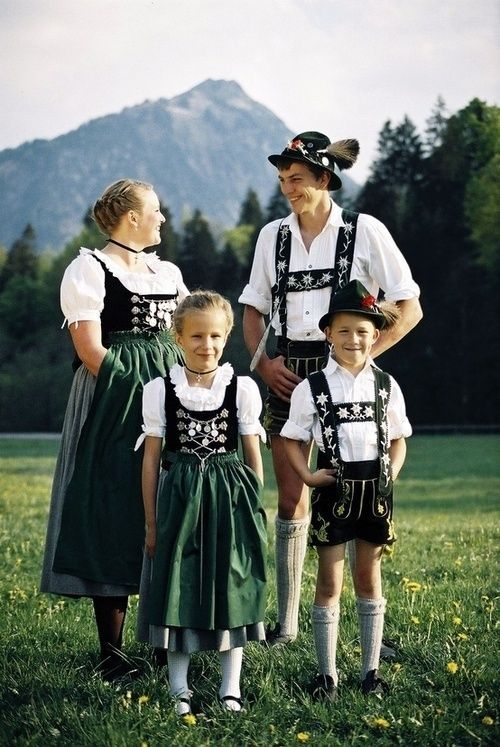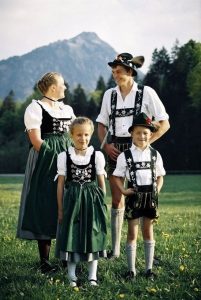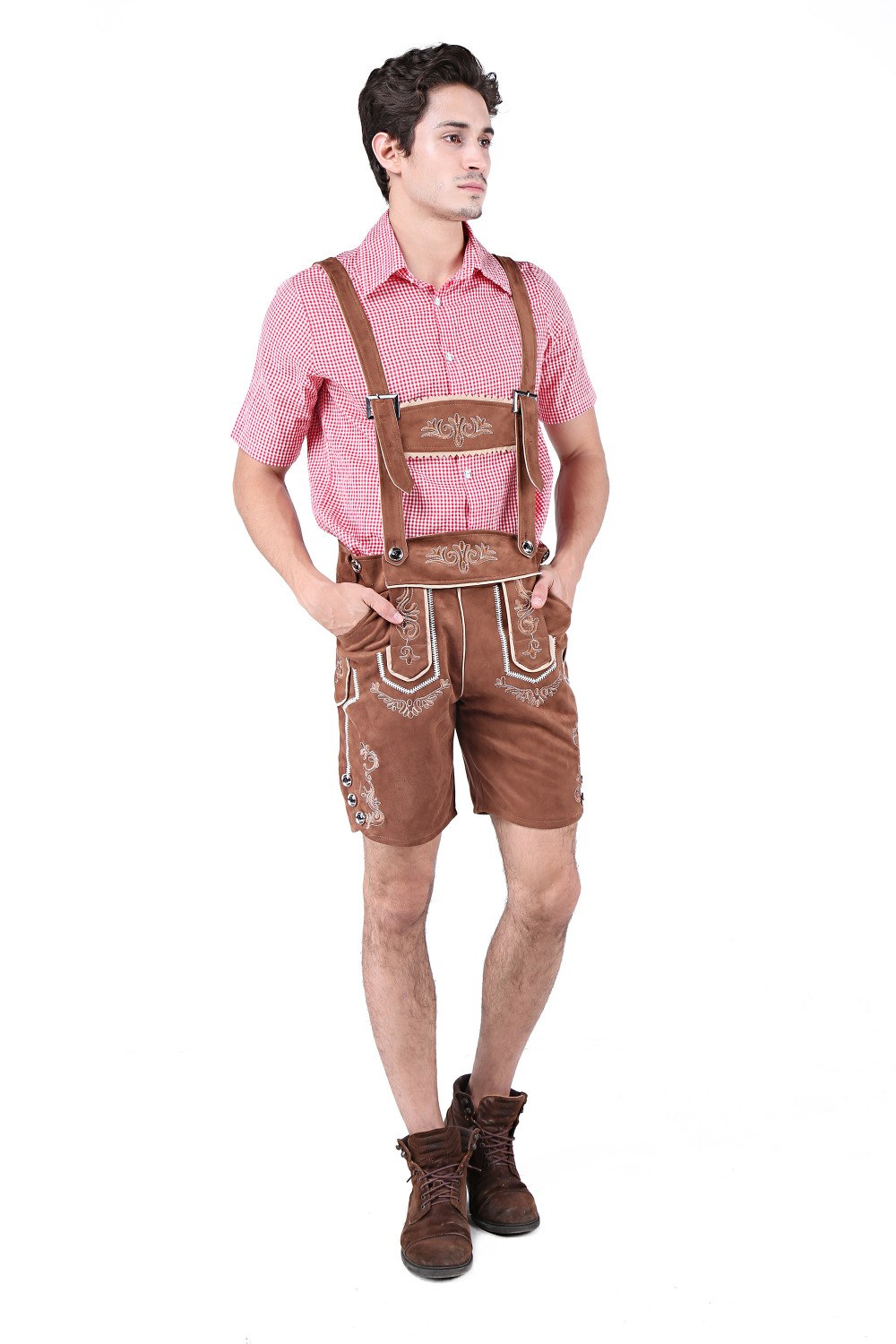

Women’s/Girl’s German Dirndl Dress:
DIRNDL
The traditional German women’s outfit is a called a ‘dirndl’. It is comprised of a long apron on top of a long decorated pinafore dress with a vest-like top and embroidery, lace, ribbon, and other ornaments on it. It has a full decorated skirt. Underneath this vest-like top is a white blouse with puffed sleeves. Traditionally a dirndl falls to or below the knees to encourage modesty. In fact, the most popular length is “one jug above the ground” but is now worn above the knee among the youth. The blouse or shirt of the dirndl has white puffy sleeves that are shoulder length or elbow length. The cotton material was lightweight and was worn by servant girls in the 18th century but is now worn in German celebrations, Bavaria, and other countries like Austria, and Switzerland. Little and teenage girls often wear the same thing as the women.

Summer and other warmer occasion, dirndls are made of lightweight cotton, reveal more skin (including short sleeves), and colors are usually lighter.
In winter the skirts are thicker and warmer. Aprons are made out of wool, linen, thick cotton, or velvet. Colors are typically darker and sleeves are longer to protect from the cold as well.
SHOES
Women’s shoes are nowadays usually flats or low-heels because a dance could break out at any time. Tall rain boots (wellies) are typically what they wear for bad weather. Traditionally thick-soled shoes used to be the most common though.
Men’s/Boy’s Lederhosen Outfit:
LEDERHOSEN
Lederhosen actually means “leather trousers” so that gives us a pretty good guess about these traditional outfits. They’re short to-the-knee trousers that go over a plaid shirt (which usually are red or green). Originally the lederhosen was meant for hard physical work such as farming. A more expensive pair would be handmade of deerskin which is strong and tearproof and could last a lifetime. Less expensive Lederhosen would be made of velour leather which is heavier and not as durable. Boys would wear the same outfit, but typically it was less decorated and more basic and plain.

SHOES
Haferlschuhe are the best traditional shoes! They are sometimes made out of a goat’s hoof and give great stability to the wearer. They have a unique look that’s special to the lederhosen outfit.




